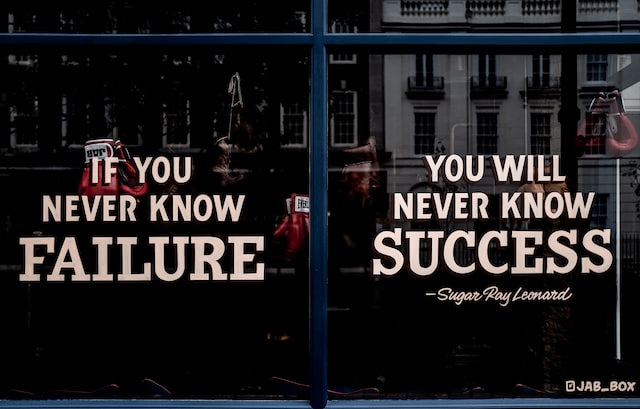The road to success is paved with failure. You cannot succeed if you don’t fail along the way and are able to learn from those setbacks. The fact is no one succeeds unless they first embrace failure, learn from it, and try again and again.
Looking back over my career, I recall failures big and small that undermined my confidence and stalled my ability to get a job and get promoted more quickly. Some of these failures I blamed on other people, some I attributed to circumstances beyond my control. Ultimately, I failed to accept my responsibility for what happened and what I could do differently next time by learning from the experience.
“I’ve missed more than 9000 shots in my career,” said Michael Jordan. “I’ve lost almost 300 games. Twenty-six times, I’ve been trusted to take the game winning shot and missed. I’ve failed over and over and over again in my life. And that is why I succeed.”
Choose any successful person—no matter the field—and I suspect they can recount a series of obstacles that they needed to overcome before they reached their goals. Here are a few famous failures.
- Albert Einstein – Failed to speak until age 4; at age 16, he failed to be admitted into the Swiss Federal Polytechnic school; graduated from college but struggled in classes so much that he considered dropping out; sold insurance door to door for two years before joining the patent office examining applications for various devices. Finally, he went on to develop the fundamental core laws governing physics, won the Nobel Prize and created the beginnings of quantum theory.
- J.K. Rowling – At 17 she failed to be accepted at Oxford University; at 25 her mother died of Multiple Sclerosis, leaving her extremely distraught and upset; she found work with Amnesty International and then taught English; after the breakup of a difficult marriage with a young child at the age of 38, she moved in with her sister; diagnosed as clinically depressed and suicidal yet she completed the manuscript for Harry Potter and the Sorcerer’s Stone. After getting rejected by the 12 major publishing houses, a small literary house took a chance on the book, which led Rowling to be the first author to become a billionaire through book writing.
- Oprah Winfrey – As a young child living with her mother and younger sister, she was sexually molested by an uncle, cousin and a family friend; she ran away at 13, became pregnant at 14 and give birth prematurely to a child who died soon after birth; after a short stint as co-anchor for a news organization in Baltimore, she was fired for being “unfit for television.” At 29 she was hired at AM Chicago, a show that ultimately became the Oprah Winfrey Show, and is now a world-famous multi-billionaire.
- Abraham Lincoln – At age 23 he lost his job, ran for the state legislature and lost; at age 26 the love of his life died; at 29 he lost his bid to become Speaker in the Illinois House of Representatives; at 39 he failed in his bid to become Commissioner of the General Land Office in D.C.; ten years later he failed to win a seat as a U.S. Senator. Then, at the age of 52, he was elected President of the United States and became one of the most famous failures to ever hold the high office in the United States.
Failure is not the opposite of success, but an essential step towards it. Embrace your failure as it provides the vital information necessary for learning to succeed. The sooner you accept this, the sooner you reach success.


